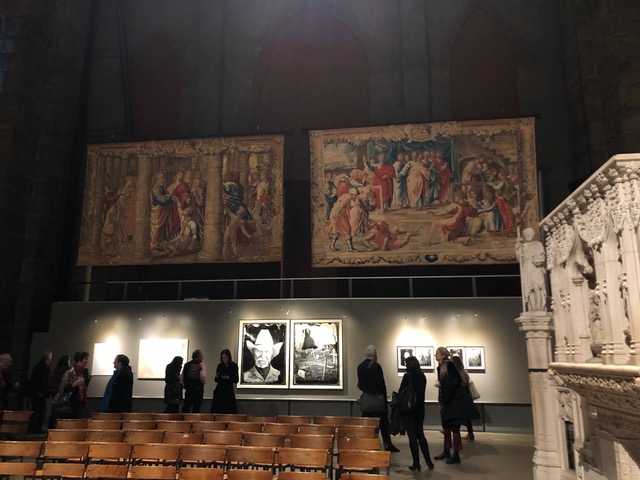Six gelatin silver prints from Tomas Van Houtryve’s Lines and Lineage series are on display in the group exhibition, Sanctuary: Building a House Without Walls, in the Cathedral of Saint John the Divine in New York City from February 14 to June 30, 2019.
About Lines and Lineage
We often forget that the boundary between Mexico and the United States was not always where it is today. It used to be 1100 kilometers farther north, following what is now the state line between Oregon and California and running east to Wyoming before zagging southeast to Louisiana. Originally home to the indigenous peoples of the region, much of this land was Spanish and then Mexican territory for centuries before becoming what we now think of as the American West.
Spanish colonists and missionaries settled here beginning in 1598. In 1821, Mexico won independence from Spain, and by the middle of the century, it was in some ways far more advanced than its neighbor to the northeast. It abolished slavery shortly after independence; black Mexicans soon gained prominent positions, including the governorship of California. Indigenous people were given the right to vote. All this came to an end in 1848, when the United States attacked Mexico, seized half its land, and created the border that we know today.
At the time, the war on Mexico was emphatically opposed by prominent Americans, including Abraham Lincoln and John Quincy Adams. Henry David Thoreau penned his groundbreaking essay on Civil Disobedience after his arrest for nonpayment of taxes, an act of defiance of what he called an “unjust” war that aimed to “expand the slave territory.”
Mexican administration was cut short before photographic technology, revealed in Paris in 1839, arrived in the region. The well-known visual record of the American West—dominated by photos of cowboys and white settlers, the Gold Rush and the arrival of the railroads—was created after 1848. Images from the Mexican era, on the other hand, were never fixed in our memory. Using glass plates and a nineteenth-century camera to photograph landscapes along the original border and create portraits of descendants of early inhabitants, this project imagines what that history might look like. It questions the role that photographs—both present and missing—have played in shaping the identity of the West.
About Sanctuary: Building a House Without Walls
The group show focuses on the right to shelter, and beyond that, an exploration of what shelter and sanctuary mean in a world divided by sectarian discord, cultural migration, and ongoing refugee crises. Participating artists include Louise Bourgeois, Alicia Eggert, For Freedoms, LaToya Ruby Frazier, Lewis Hine, John Moore, Tomas van Houtryve, and Alisha Wormsley.